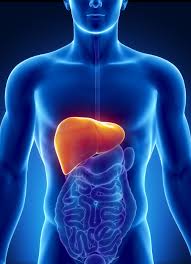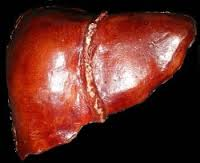

According to the Centers for Disease Control and Prevention, one out of every 20 hospitalized patients will contract a healthcare-associated infection. The spread of these infections, however, can be controlled. There are several simple and cost-effective strategies that can help prevent infections, from the basic tenet of hand hygiene to the team-oriented approach of Comprehensive Unit-based Safety Programs.
Four infection prevention and process improvement experts weigh-in on the 10 best strategies for prevention of infections.
1. Hand Hygiene. According to the CDC, this is the simplest approach to preventing the spread of infections and needs to be incorporated into the culture of the organization. Surgical team personnel should wash their arms and forearms before a procedure and put on sterile gloves, according to CDC guidelines for infection control. Steven J. Schweon, RN, MPH, infection prevention consultant and member of The Society for Healthcare Epidemiology of America, suggests the “clean in, clean out” approach, wherein hands and equipment are cleaned or disinfected on the way into the patient’s room and on the way out again.
2. Environmental hygiene. According to J. Hudson Garrett, PhD, MSN, MPH, FNP-BC, CSRN, VA-BC, senior director for clinical affairs at PDI, one of the most common sources of transmission of infection is environmental surfaces. Certain types of microbial bacteria are capable of surviving on environmental surfaces for months at a time, according to Mr. Garrett. When healthcare providers or patients touch these surfaces with their skin, the bacteria can be transmitted, causing infection. Thus, it is essential that the environment be kept clean and disinfected. Patients and their families are now the biggest advocates of medical safety, and Mr. Garrett suggests including them in infection prevention protocols, especially with respect to maintaining a clean and sanitary environment. It is also important to involve multidisciplinary environmental hygiene teams in meetings regarding adherence to infection prevention protocols. Irena L. Kenneley, PhD, APRN-BC, assistant professor at the Frances Payne Bolton School of Nursing at Case Western Reserve University in Cleveland and member of the Association for Professionals in Infection Control and Prevention, says that meeting with environmental services and sharing in-house surveillance data helps them relate housekeeping tasks with the spread of infection and helps ensure optimal environmental hygiene.
3. Screening and cohorting patients. Part of the preoperative health evaluation process should include consistent screening of patients, says Siew Lee Grand-Clément, a black belt in robust process improvement at the Joint Commission Center for Transforming Healthcare. These patients must then be treated prior to surgery or any other procedure. However, it is essential that patients who are suffering from the same disease or infection should be kept together in a designated area. “This is essential to ensure that cross infections do not happen,” says Dr. Kenneley. Infections can spread easily from one patient to another if they are being treated in the same area, with the same staff and shared patient care equipment. Some infectious agents are even airborne, says the CDC. Organizations must also evaluate whether the staff is adhering to specific protocols for specific infections, Dr. Kenneley says.
4. Vaccinations. The staff at a healthcare organization may sometimes be the cause of the spread of infections. They come into contact with patients with different types of diseases and may contract infections, according to the CDC. As a result, organizations must make sure that recommended vaccinations are being administered to their staff as recommended. “Keeping healthcare professionals healthy pays dividends,” says Mr. Schweon. It results in decreased transmission risk to co-workers and patients.
5. Surveillance. Through surveillance, organizations should gather data regarding infection patterns at their facility. They should also regularly assess current infection prevention protocols. Having a robust infection surveillance program helps organizations measure outcomes, assess processes of care and promote patient safety, says Mr. Schweon. Sharing the data that the infection surveillance program gathers is the next step. “Communicate, display and discuss all process and outcomes measures with all stakeholders,” says Dr. Kenneley.
6. Antibiotic stewardship. The misuse and overuse of antibiotics can put patients at a risk of contracting infections, according to the Association for Professionals in Infection Control and Epidemiology. Inappropriate antibiotic use may also result in patients becoming resistant to some drugs. If those patients contract an infection, it becomes harder to treat them and the risk of it spreading increases. Mr. Schweon suggests establishing a program to assist with appropriate antibiotic selection and dosing. This helps optimize patient outcomes and minimize adverse events like C. difficile infection and antibiotic toxicity, he says.
7. Care coordination. Breakdown of communication in the surgical preparation, planning and postoperative care management among various care providers during the care transition process can lead to surgical site infections that could otherwise be avoided, says Ms. Grand-Clément. Often, the concept of “stopping the line” is not practiced, which is when care providers are doubtful if certain necessary infection prevention or surgical preparation activities have been completed by the previous care providers, and they halt the care transition process until the matter is resolved. Organizations must avoid situations where a certain process is overlooked by a department that assumes another department has already completed that it. “Activities must be timed and accountability should be specifically assigned,” she says. There needs to be coordination of care and communication within the surgical team as well. There is a risk of breaking the sterile field in the surgery room particularly around the portion of the surgical procedure when multiple, critical activities are taking place at the same time that require staff to multitask, she says. Care coordination goes a long way in preventing surgical site infections.
8. Following the evidence. Keeping abreast of the latest findings regarding the spread of infections and strategies for prevention is essential for a successful infection prevention program. “Infection preventionists must continually monitor the professional literature and attend educational conferences for the latest information with preventing infections,” says Mr. Schweon. However, it is also important to first look at the reality of your organization’s processes and perform your own gap assessment before adopting new practices. What is new in the infection prevention field may not necessarily be the best fit for your organization, says Ms. Grand-Clément.
9. Appreciating all the departments that support the infection prevention program. An organization’s culture may need to shift from thinking that only infection preventionists are accountable for infection prevention, because every patient encounter throughout the care continuum presents all healthcare workers with an infection prevention opportunity, says Ms. Grand-Clément. All caregivers are accountable, and to encourage infection prevention protocols, healthcare professionals should show appreciation for all the people who help keep infections at bay, from the people who prepare surgical instruments for the operating room to those preparing the food safely for patients, staff and visitors, says Mr. Schweon.
10. Comprehensive Unit-based Safety Programs. The Comprehensive Unit-based Safety Program is a structured strategic framework for patient safety improvement that integrates communication, teamwork and leadership, according to the Agency for Healthcare Research and Quality. Each unit should have its own infection prevention champions, with these individuals becoming an extension of the infection prevention and control department, adds Mr. Garrett. “The CUSP program has demonstrated time and time again how effective unit-based champions can be in influencing positive change and improving outcomes,” says Mr. Garrett.
Each of these strategies helps organizations keep the spread of infections at bay. When implemented, supported and carried out together, these 10 strategies are instrumental in ensuring the success of an infection prevention program at an organization.



